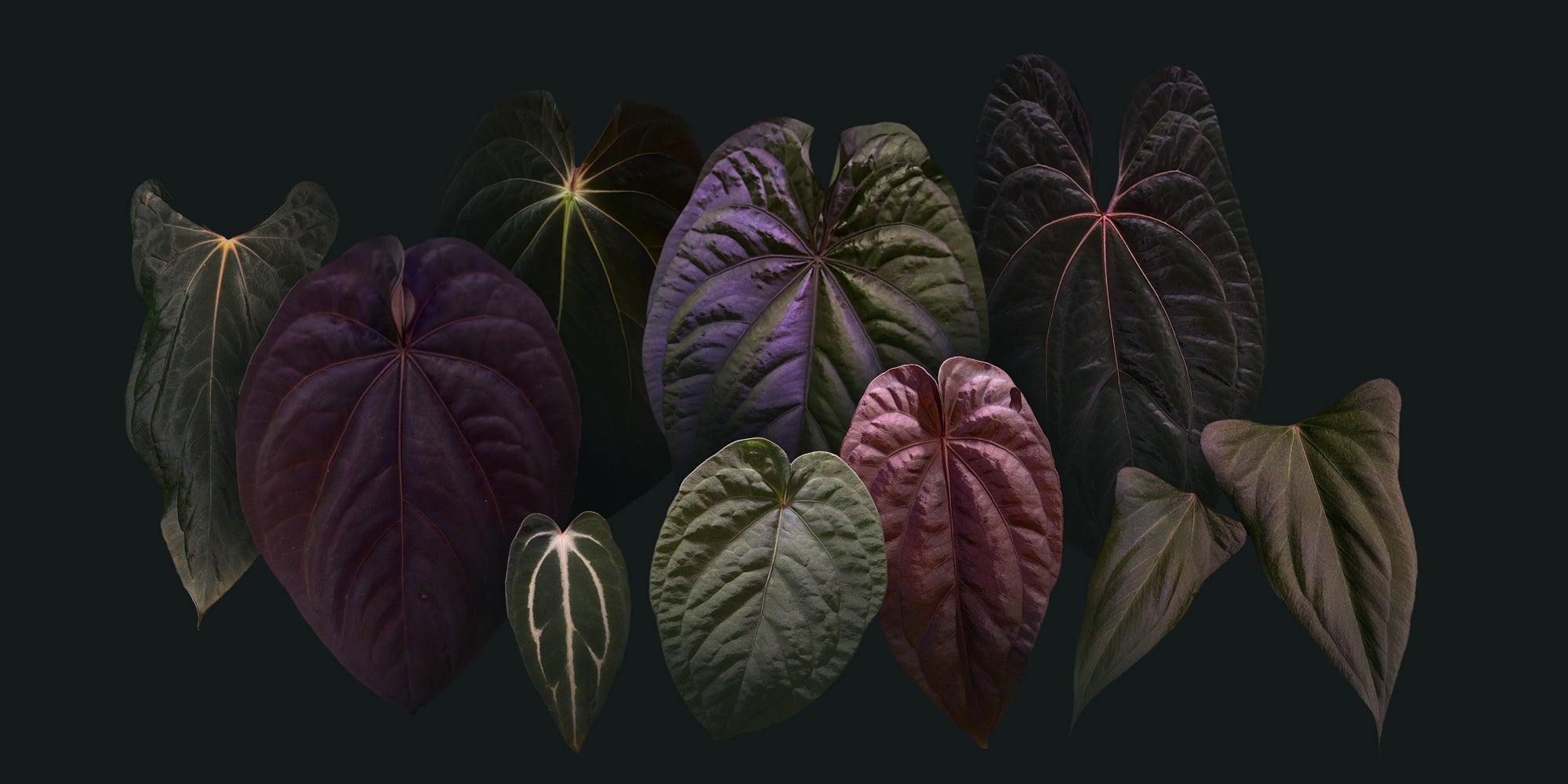Understanding Crosses, Generations, and Genetic Terms
Anthurium Breeding Guide
If you’ve ever fallen in love with a particular velvet texture, striking veining, or dramatic leaf shape in your Anthurium collection, you might’ve wondered: "Can I make more plants like this?" Welcome to the world of Anthurium breeding — where patience, curiosity, and a little pollen can go a long way.
In this post, we’re breaking down the basics of breeding: the types of crosses you can make, what generation labels like F1 and S1 actually mean, and how each method can influence the traits of your seedlings. Whether you're a beginner or someone with a few seed pods already under your belt, this guide will help you understand the bigger picture.
Types of Anthurium Crosses
Let’s start with the different ways plants can be bred. These terms describe how you're combining genes—and that combo determines what kinds of traits might show up in the offspring.
1. Species-to-Species Cross (Intraspecific)
This is when you cross two plants of the same species, for example, crossing two different forms of Anthurium crystallinum.
Great for:
- Stabilizing a species' traits
- Enhancing specific features (e.g., stronger venation, rounder leaves)
2. Interspecific Cross
This is when you cross two different species of Anthurium — like Papillilaminum × Carlablackiae.
Great for:
- Creating hybrids with mixed traits
- Combining the best of both parents (velvet + thickness, for example)
Be aware: Even when all the seeds come from the same batch of berries, the resulting seedlings can look wildly different from each other. Some may take after one parent, some the other, and some may express traits you didn’t even know were hiding in the mix.
3. Self-Cross (Selfing)
A self-cross happens when a plant pollinates itself. The same individual is both the seed parent and the pollen donor.
Great for:
- Stabilizing traits over generations
- Revealing recessive genes
- Creating a more “predictable” genetic line
Be aware: selfed offspring won’t be identical clones, but will show how consistent (or not) a plant’s traits are.
4. Back-Cross
A back-cross is when you take a hybrid and cross it back to one of its parents.
For example:
- Parent A = Papillilaminum
- Parent B = Carlablackiae
- Hybrid AB
- Back-cross: AB × Papillilaminum
The result will be plants that are roughly:
75% Parent A and 25% Parent B
Great for:
- Emphasizing or "reclaiming" traits from a specific parent
- Refining a hybrid to look more like one side of the family
- Getting closer to a desired phenotype with each generation
Understanding Generations
Filial Generations (F-Series)
These labels are used to describe generations from a cross between two genetically distinct parent plants, whether they are different species or different individuals of the same species.
- F1 = First generation from a cross between two unique parents
- F2 = Offspring from two F1 siblings
- F3, F4… = Continued generations, often from sibling crosses or open pollination within the line
Expect lots of variation in F2 and later generations — that’s when traits start to reshuffle and hidden genes pop out.
Selfed Generations (S-Series)
Used when a plant is self-pollinated.
- S1 = First generation from selfing a plant
- S2 = Selfing an S1 plant, and so on
- S3… = Continuing the selfing process
Selfing tends to make traits more stable over time—but it can also bring out unexpected or recessive features, for better or worse.
Breeding Tips for Beginners
Breeding is about observation, intention, and patience. Not every cross gives you magic seedlings—but every cross teaches you something.
- Start with strong parent plants: Healthy, mature, and showing the traits you want.
- Be patient: From pollination to ripe berries can take months.
- Label everything: You will forget who the parents were if you don’t.
- Store pollen: You never know when a favorite plant will be in bloom again.
- Track your results: Notes and photos help you learn what’s working.
